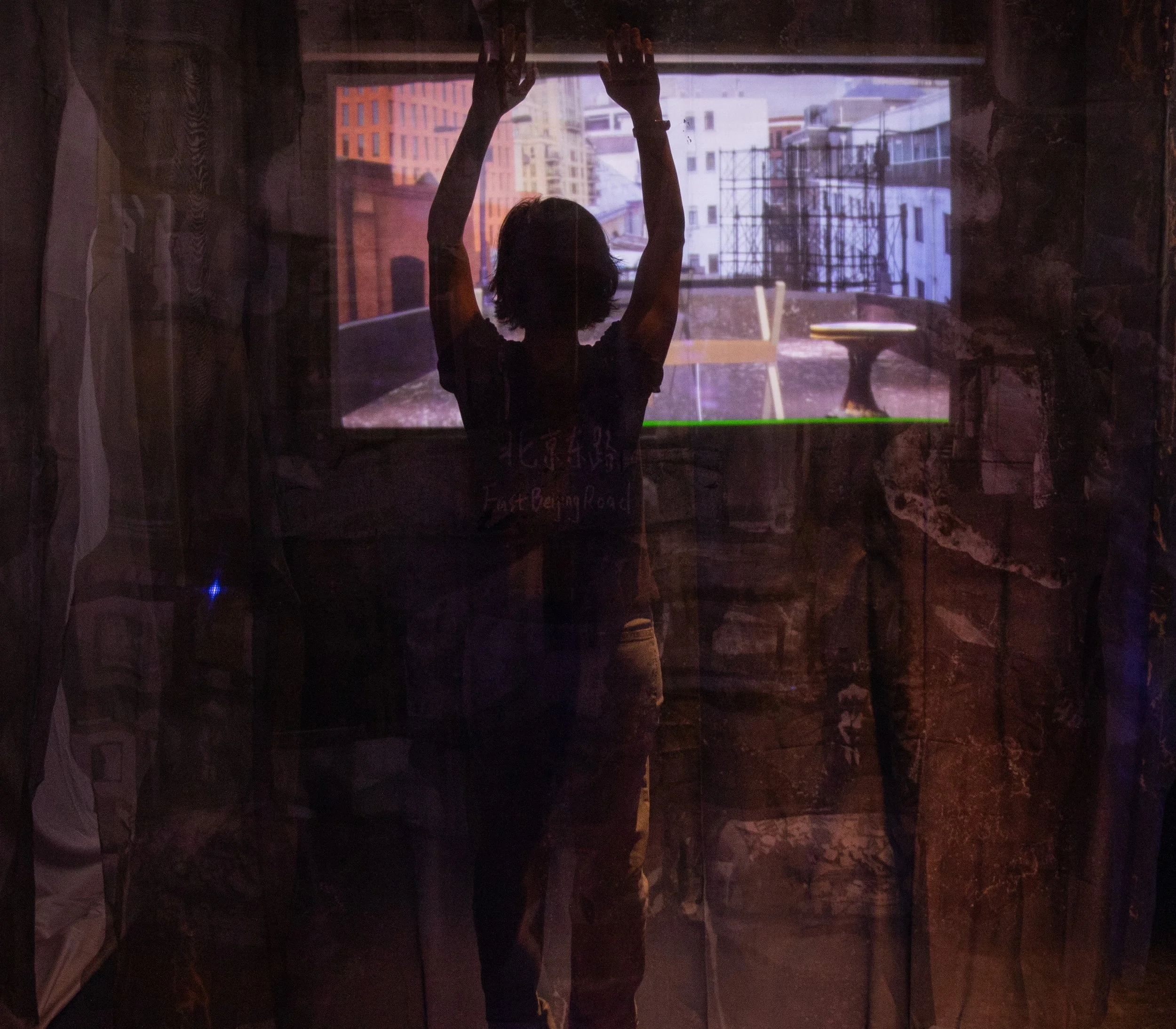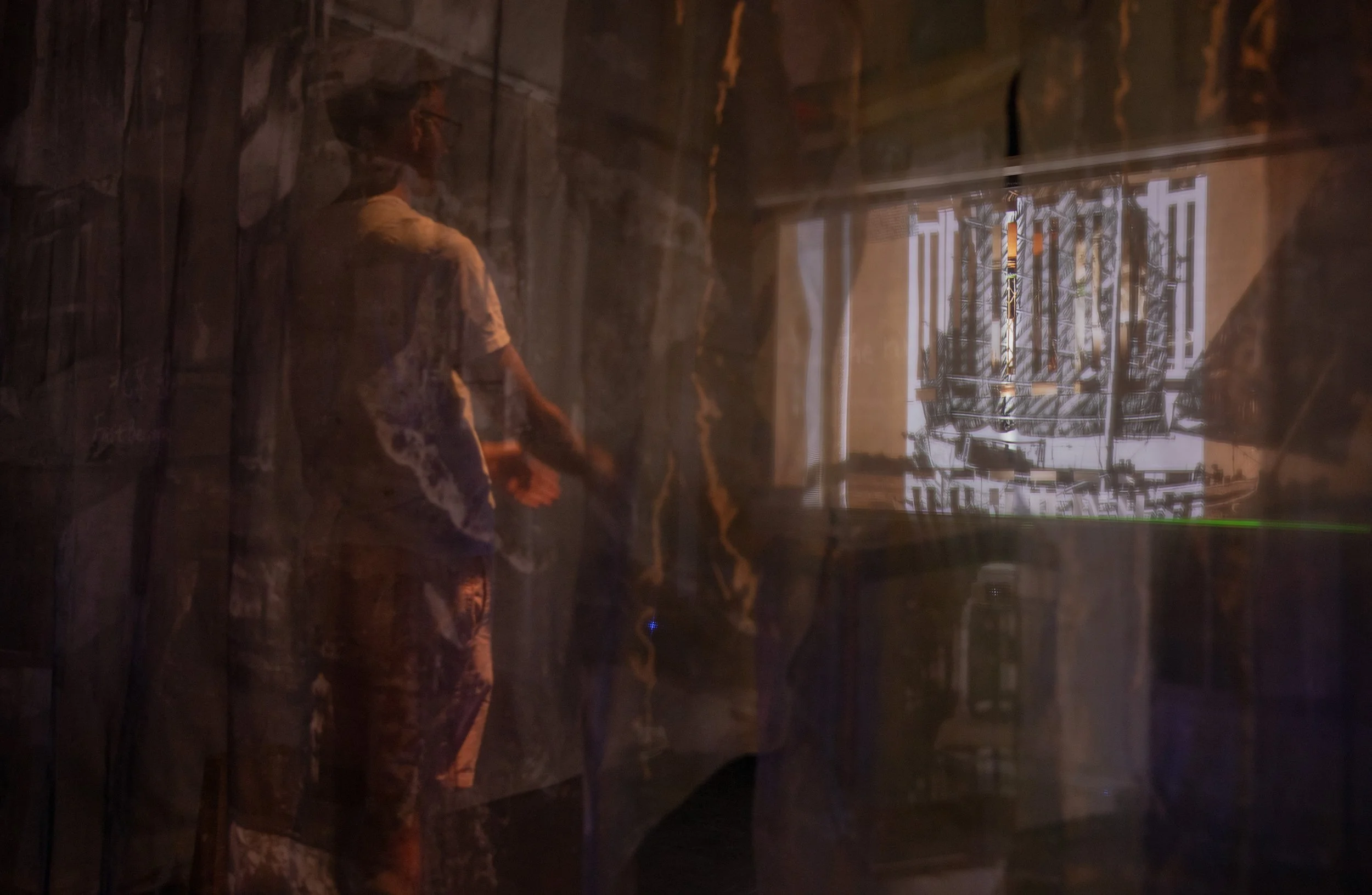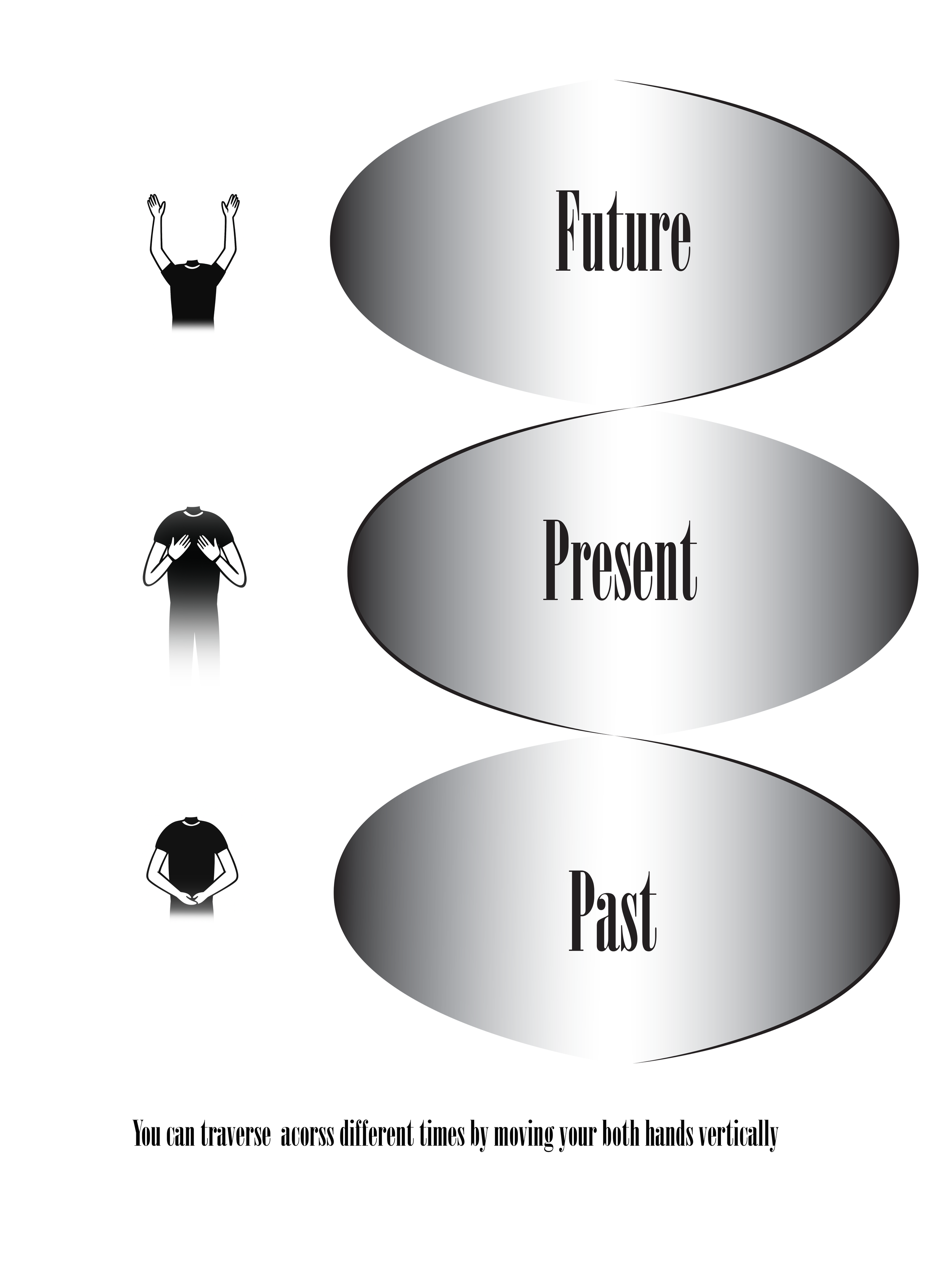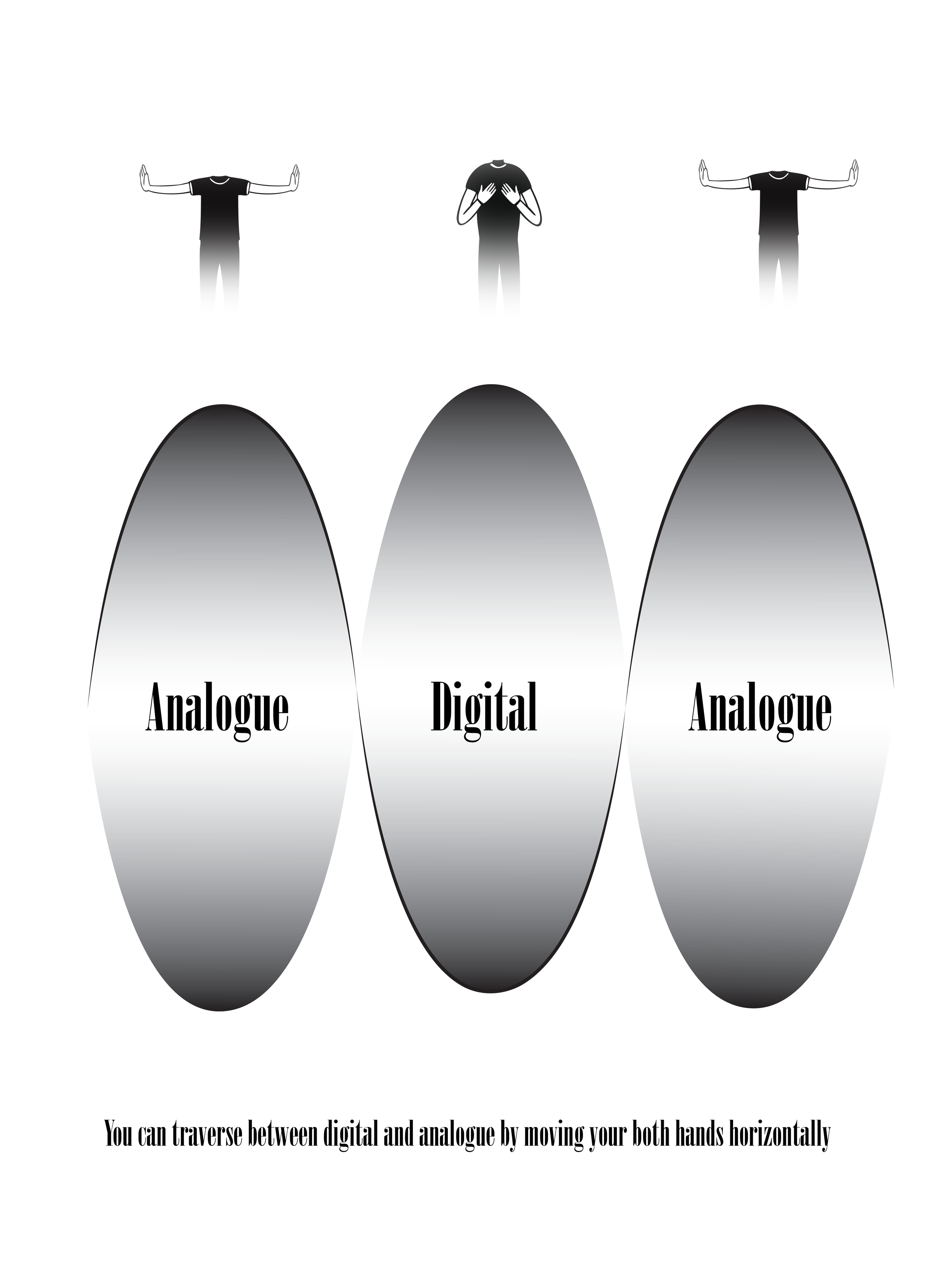


Project Description
Seeing Through the Dark at East Beijing Road is an interactive video installation in which the audience use both hands to move horizontally and vertically, revealing and concealing different layers of an abandoned building in Shanghai, China, across various times and spaces. This project is developed based on the asymmetric VR installation East Beijing Road.
This project explores how the past can be reimagined through digital and analogue technologies, human and non-human participation, and individual and collective actions. This interactive video installation uses body-tracking sensors and a real-time game engine, with audience participation, to reveal the stories of a building with a history spanning over 100 years in Shanghai, China. All the residents of this building were forced to move out due to an ongoing gentrification policy. By using various technologies—including photogrammetry, 3D modeling, generative AI, and 16mm film—along with archival sources, a synthetic space is created based on the original building. An interview with an elderly resident who had lived in the building for more than 50 years, a dance performance on the terrace, and archival images are represented in the virtual environment. Old and new, digital and analog, real and fictional, and virtual and physical elements inter weave. When no audience is present in front of the body-tracking sensor, an AI-generated video is played, created from the scratches and chemical contamination left on hand-processed 16mm films. The collaboration between human and non-human agents in this creation process invites us to reconsider how the past can be reimagined with generative AI. Rather than using AI to restore damaged archives or animate still archival images, I explore how AI can reimagine the archive through a non-human gaze. These AI-generated moving images do not seek to align with human perceptions of the past; instead, they create abstractions that offer non-anthropocentric visions of history. What is the role of humans when imagining the past with AI? In this installation, audiences must use their body movements to reveal human stories. These narratives are visualized in both black-and-white 16mm film and colorful 3D renderings. Drawing on Diana Taylor’s concept of repertoire—referring to embodied memory through performances, gestures, orality, movement, dance, and singing—this interactive video installation functions as a repertoire for re-enacting the past. Rather than representing the history of this building, this project focuses on how the past is represented and reactivated through bodily movement. It questions the relationship between visible and invisible histories, reimagines the ruins through different modalities, and reconsiders the role of technology in re-enactment. Audiences use their bodies to trigger human narratives of the building, while AI reimagines the scratched 16mm films. This interactive video installation envisions multiple interpretations of the vanished building, revealed and concealed through the interplay of digital and analogue technologies, and human and non-human remediations.
Interaction Guide
Only one audience member is allowed in the interactive zone at a time. When the audience enter into the interactive zone, the stories hidden behind the AI-generated video will be revealed.
The participant can move their both hands vertically to traverse different times: the lowest position reveals an interview with an elderly resident who lived in the building for over five decades; the middle position reveals a reimagination of the building after all the residents moved out; and the highest position reveals a dance on the building’s terrace—a symbolic gesture of “dancing to the future.”
The participant can also move both hands horizontally: when the distance between the hands increases, the video transitions into a 16mm film rendering; when the hands move closer together, the video gradually blends into a colorful 3D rendering.


